A while back I purchased an IBM 5160 that had an IMI-5012H hard drive in it but, unfortunately, it didn't boot or spin up. After a quick examination of the computer, I found that the hard drive was making this noise: https://youtu.be/0TqyR2eXevQ
I then noticed that some of the screws on the lid were missing.
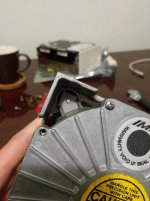
I decided to remove the lid and look inside because the drive was already making a horrible noise and it appeared that someone had been inside it before. This is what I found:
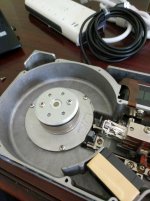
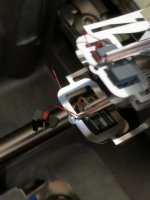
There's no way to fix this drive without replacement platters and heads and there's no way to get those parts without taking them from another drive and, at that point, you'd just use the other drive. I was a little discouraged at first and this might have been the end of the story but I noticed something interesting about how this drive was made. The drive itself is cradled within a frame which has rubber shock absorbers. When taken apart, the frame looks like this:
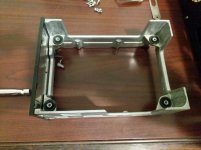
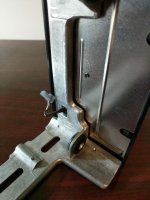
It occurred to me that I could fabricate an aluminum adapter plate which matched the hole patterns of this frame and of a modern 3.5" drive. After a little googling and measuring, I came up with this design:
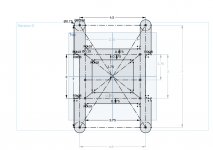
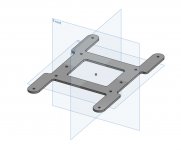
I sent the design out to get cut by a waterjet. Unfortunately, my measurements weren't perfect and I had to do a little trimming and drill a new hole(1 of the 4 holes is offset). However, with those minor modifications out of the way, I'm very pleased with the result. It keeps the exterior of the computer looking original, the new drive gets added shock absorbtion, and I'll even be able to use the hard drive light by connecting it to the HDD activity pins on an XT-IDE.
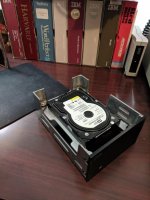

I don't feel bad about repurposing the frame because the drive was 110% dead and because everything I've done is reversible, if necessary. Though, I can't think of a reason that I'd want to reverse it. I am now left with what's left of the drive and a controller which I can't bring myself to throw away. If anyone has any use for them as spare parts, I'd be happy to send you the controller and what's left of the drive for the cost of shipping. PM me if you're interested.

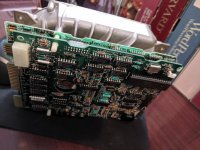
I then noticed that some of the screws on the lid were missing.

I decided to remove the lid and look inside because the drive was already making a horrible noise and it appeared that someone had been inside it before. This is what I found:


There's no way to fix this drive without replacement platters and heads and there's no way to get those parts without taking them from another drive and, at that point, you'd just use the other drive. I was a little discouraged at first and this might have been the end of the story but I noticed something interesting about how this drive was made. The drive itself is cradled within a frame which has rubber shock absorbers. When taken apart, the frame looks like this:


It occurred to me that I could fabricate an aluminum adapter plate which matched the hole patterns of this frame and of a modern 3.5" drive. After a little googling and measuring, I came up with this design:


I sent the design out to get cut by a waterjet. Unfortunately, my measurements weren't perfect and I had to do a little trimming and drill a new hole(1 of the 4 holes is offset). However, with those minor modifications out of the way, I'm very pleased with the result. It keeps the exterior of the computer looking original, the new drive gets added shock absorbtion, and I'll even be able to use the hard drive light by connecting it to the HDD activity pins on an XT-IDE.


I don't feel bad about repurposing the frame because the drive was 110% dead and because everything I've done is reversible, if necessary. Though, I can't think of a reason that I'd want to reverse it. I am now left with what's left of the drive and a controller which I can't bring myself to throw away. If anyone has any use for them as spare parts, I'd be happy to send you the controller and what's left of the drive for the cost of shipping. PM me if you're interested.




